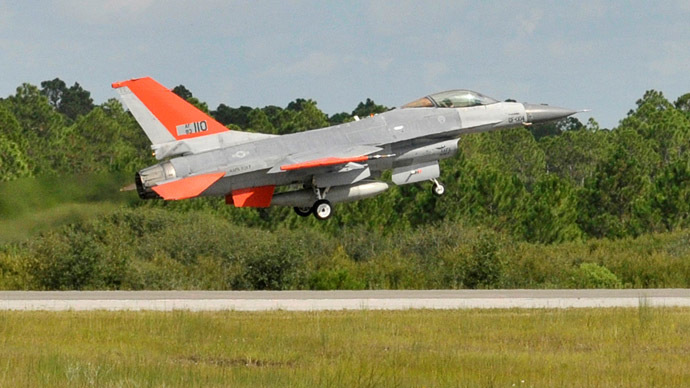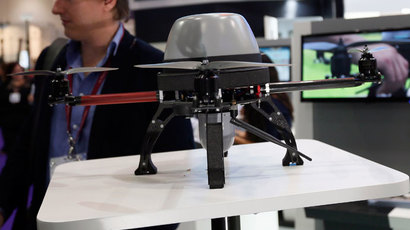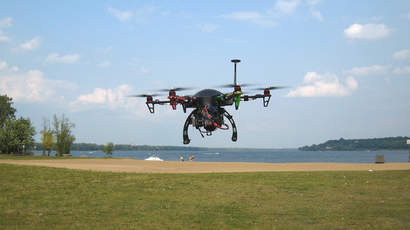Air Force’s unmanned F-16 fighter jet completes first flight

The US Air Force and the Boeing aerospace and defense corporation announced they have successfully converted a retired F-16 into a drone. It is now possible for fighter jets to fly supersonic speeds, land, and operate normally without a pilot on board.
Boeing announced Tuesday that modified versions of the F-16 Fighting Falcon will operate as a QF-16 Full Scale Aerial Target for use in Air Force training practices. Last week, two Air Force pilots controlled the first successful flight from the ground station at Florida’s Tydall Air Force Base.
The maiden flight departed from the runway as normal and completed a series of simulated maneuvers in the air over the Gulf of Mexico, surpassing the speed of sound and landing safely.
“It was a little different to see it without anyone in it, but it was a great flight all the way around,” said US Air Force Lieutenant Colonel Ryan Inman, the commander of the 82nd Aerial targets Squadron. “It’s a replication of current, real world situations and aircraft platforms they can shoot as a target. Now we have a 9G capable, highly sustainable aerial target.”
The Air Force has maintained that QF-16s will only be used in training exercises when pilots are completing dogfight simulations in the air. The planes remain capable of being flown by an on board pilot though, and a bomb will be placed on board in the event that an unmanned plane needs to be destroyed.
While only six QF-16s have been developed, the revamped F-16s will replace the Q-4 drones currently used in training exercises after a number of those crashed in Florida.
“Currently, the majority of aircraft parts for the QF-4 are no longer being manufactured,” Inman told the Panama City News Herald. “The QF-16 provides a complete supply chain that is still active and will maintain replacement part availability for our entire aerial target fleet.”













